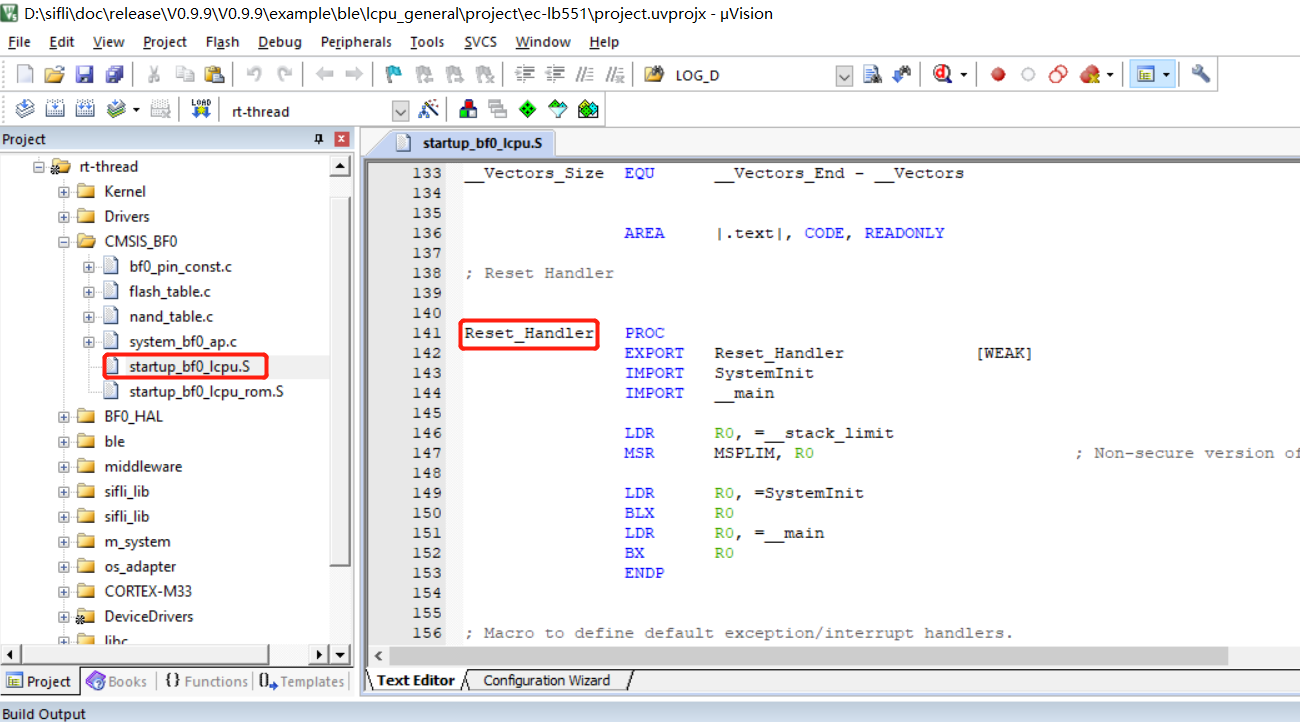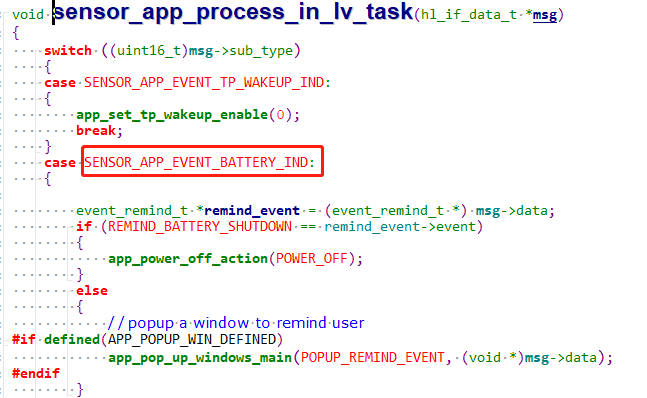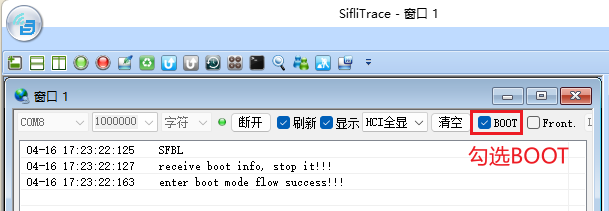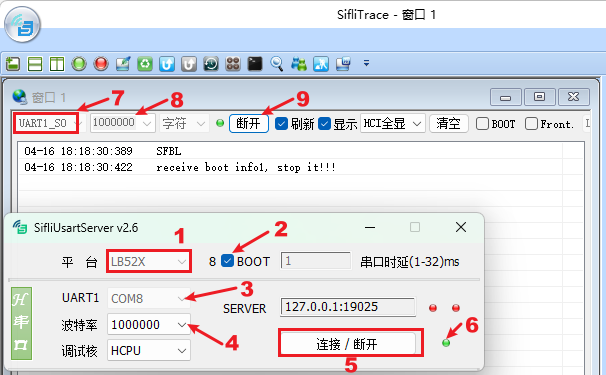10 System¶
10.1 How to Call and Replace Functions and Variables in the ROM of Lcpu?¶
To save Lcpu RAM space, the BLE protocol stack, RTT OS, complete HAL code, and some driver code are固化 in the ROM.
In Lcpu, functions and variables available for customer use are placed in the following file via a symbol file:
SDK\example\ble\lcpu_general\project\ec-lb551\rom.sym and are declared as strong functions without the __weak parameter.
Therefore, when writing code, the ROM code will be called whenever possible.
For example:
In the file bf0_hal_i2c.c in the SDK, the function HAL_I2C_Mem_Read is included in the compilation, but during linking, it is defined as a weak function:
#define __HAL_ROM_USED __weak

In the corresponding example\ble\lcpu_general\project\ec-lb551\rom.sym file, as shown in the following figure:

There is a function with the same name, and it is not a __weak weak function, so it will link to the strong function code in the ROM. Therefore, the rt_kprintf above will not print anything.
If you want to run the HAL_I2C_Mem_Read function and replace the function in the ROM, first delete the example\ble\lcpu_general\project\ec-lb551\rom.sym file (the path may vary depending on the project, you can check the compilation process log to locate it, as shown in the following figure):

Then run the command scons -c to clean the Lcpu compilation results and recompile. In the corresponding line 0x00005621 T HAL_I2C_Mem_Read in the file, during compilation and linking, since there is only one HAL_I2C_Mem_Read weak function, it will link to this __weak function.
At this point, the rt_kprintf("my own HAL_I2C_Mem_Read\r\n"); you added in the figure above will print.
To confirm whether the function in the ROM or the code is being used, you can search for the function’s corresponding address in the Lcpu’s compiled map file.
10.2 Interface to Get the Current Restart Method¶
The SF32LB55X chip can distinguish the following boot states:
/** power on mode */
typedef enum
{
PM_COLD_BOOT = 0, /**< cold boot */
PM_STANDBY_BOOT, /**< boot from standby power mode */
PM_HIBERNATE_BOOT, /**< boot from hibernate mode, system can be woken up by RTC and PIN precisely */
PM_SHUTDOWN_BOOT, /**< boot from shutdown mode, system can be woken by RTC and PIN, but wakeup time is not accurate */
} pm_power_on_mode_t;
You can call the following function to get the boot mode:
pm_power_on_mode_t SystemPowerOnModeGet(void)
{
return g_pwron_mode;
}
Note: Power-on, WDT, button reset, and HAL_PMU_Reboot are four cold roots that cannot be distinguished.
10.3 Is the main Function the Entry Point of Lcpu?¶
The reset address of Lcpu is:

The main function is the entry point of one of the threads after initialization is complete.
10.4 How to Wake Up Hcpu from Lcpu¶
a. Lcpu can send a message to Hcpu using ipc_send_msg_from_sensor_to_app as follows, which can wake up Hcpu:
static void battery_send_event_to_app(event_type_t type)
{
event_remind_t remind_ind;
rt_kprintf("battery_send_event_to_app: event %d\n", type);
remind_ind.event = type;
ipc_send_msg_from_sensor_to_app(SENSOR_APP_EVENT_BATTERY_IND, sizeof(event_remind_t), &remind_ind);
}
b. After Hcpu wakes up, add the code to handle this message in the task, as follows:

10.5 Methods to Enter Boot_Mode for MCU¶
The SiFli series MCU has a boot code固化 in its internal ROM. The MCU will enter the boot code upon power-on without any code being flashed. The boot code already includes common flash storage drivers and determines how to jump the code by reading the configuration at a fixed address in external storage (Flashtable). If the boot code reads an incorrect Flashtable, it will remain in the boot_mode code. You can determine whether the MCU is in the boot_mode code by comparing the PC pointer address with the HPSYS address mapping in the chip manual. The ROM address range for the boot code is typically as follows:
Memory |
Address space |
Starting Address |
Ending Address |
|---|---|---|---|
ROM |
64KB |
0x0000_0000 |
0x0000_FFFF |
Uses of entering boot_mode:
Hardware debugging, to determine whether the MCU is running normally without flashing any program;
In case the user program crashes or other issues cause Jlink or UART to fail, entering boot_mode ensures normal program download.
10.5.1 Methods to Enter Boot Mode for 55/58/56 Series MCUs¶

The 55, 58, and 56 series MCUs all have a BOOT_MODE pin. When BOOT_MODE is pulled high and the MCU is reset or powered on, it will enter boot mode. The following log will appear on the default debug serial port of Lcpu, which is also the default UART download port:
Serial:c2,Chip:2,Package:0,Rev:0
\ | /
- SiFli Corporation
/ | \ build on Mar 20 2022, 1.2.0 build dbebac
2020 - 2022 Copyright by SiFli team
msh >
In boot mode, before performing UART download, you can input the help command to verify if the serial port is working, as shown below:
Serial:c2,Chip:2,Package:0,Rev:0
\ | /
- SiFli Corporation
/ | \ build on Mar 20 2022, 1.2.0 build dbebac
2020 - 2022 Copyright by SiFli team
msh >
TX:help
help
RT-Thread shell commands:
list_mem
uart
spi_flash
reboot
regop
dump_config
dfu_recv
reset
lcpu
sysinfo
version
console
help
time
free
msh >
Note
The log output after pulling BOOT_MODE high comes from the internal ROM code and does not depend on external code. If this log is not present, please check the serial port connection and whether the MCU operating conditions are met.
10.5.2 Methods to Enter Boot Mode for 52 Series MCUs¶

As shown in the figure above, the tool SiFli-SDK\tools\SifliTrace\SifliTrace.exe is required to connect via serial port and select the BOOT option, then restart the machine. In the 52 series’ boot code, it will wait for 2 seconds. After selecting the BOOT option, the tool SifliTrace will send a command to enter boot mode. If you only see the SFBL log and not the subsequent two logs, it may indicate that the UART connection from the PC’s TX to the MCU’s RX is not working;
SFBL
receive boot info, stop it!!!
enter boot mode flow success!!!
You can also use the tool SiFli-SDK\tools\SifliUsartServer.exe together with SifliTrace.exe, as shown in the figure below:

Note
The SFBL log does not depend on the software. If this log is not present, please check the serial port connection and whether the MCU operating conditions are met.
10.6 Modifying the Long Press Reset Time for PA34 on 52 Series MCUs¶
The 58, 56, and 52 series MCUs all support long-press power key (PWRKEY) reset. If the power key PB54 (58 series), PB32 (56 series), PA34 (52 series) remains high for more than 10 seconds, a PWRKEY reset will occur, resetting all modules except the RTC and IWDT. The PWRKEY flag in the PMUC register WSR can be used to check if a PWRKEY reset has occurred, and the PWRKEY flag in the PMUC register WCR can be used to clear this flag.
Among these, the 52 series can modify the long-press reset time (58 and 56 series do not have this register and do not support modification). The default value of PWRKEY_HARD_RESET_TIME is 10 seconds, and it can be modified as needed. The internal RC32 counter is used, and it does not depend on the external 32768 Hz crystal clock. Additionally, the polarity of the key cannot be modified;
#ifndef PWRKEY_HARD_RESET_TIME
#define PWRKEY_HARD_RESET_TIME (10) /* unit:s */
#endif
The corresponding code configuration is in the initialization function HAL_PreInit:
hwp_pmuc->PWRKEY_CNT = PWRKEY_CNT_CLOCK_FREQ * PWRKEY_HARD_RESET_TIME ; //set pwrkey hard reset time time*32768